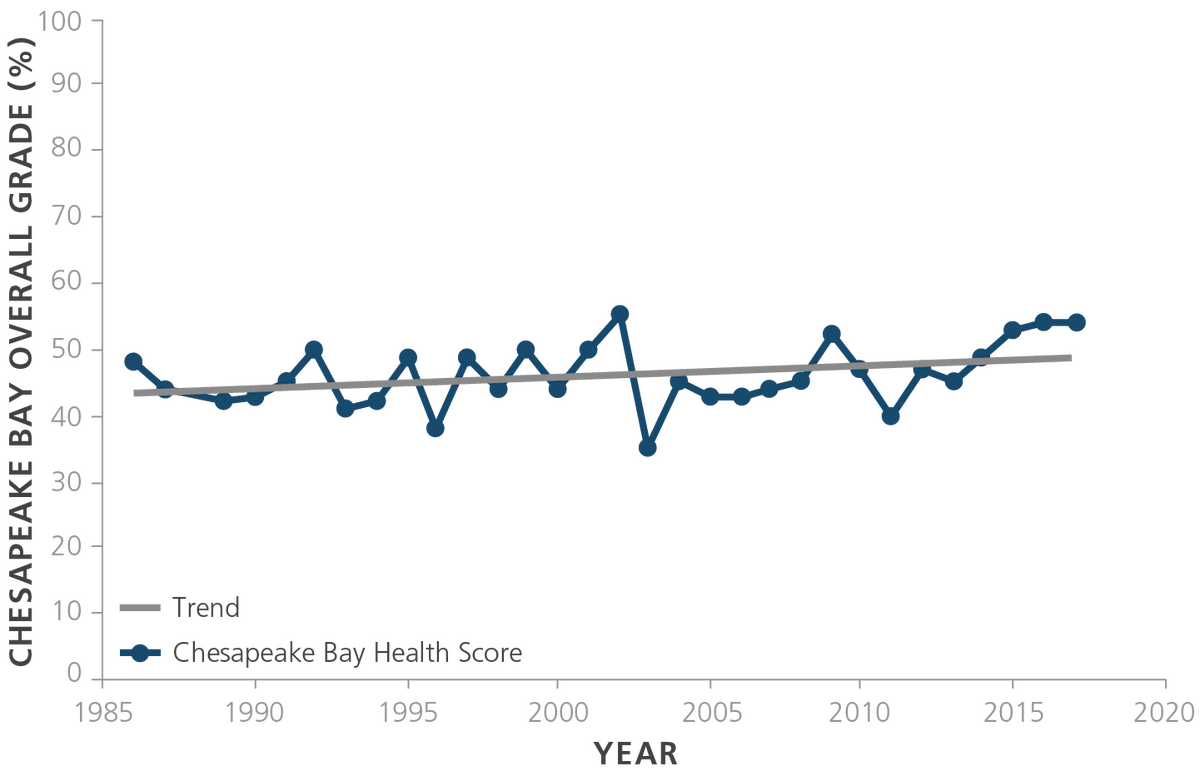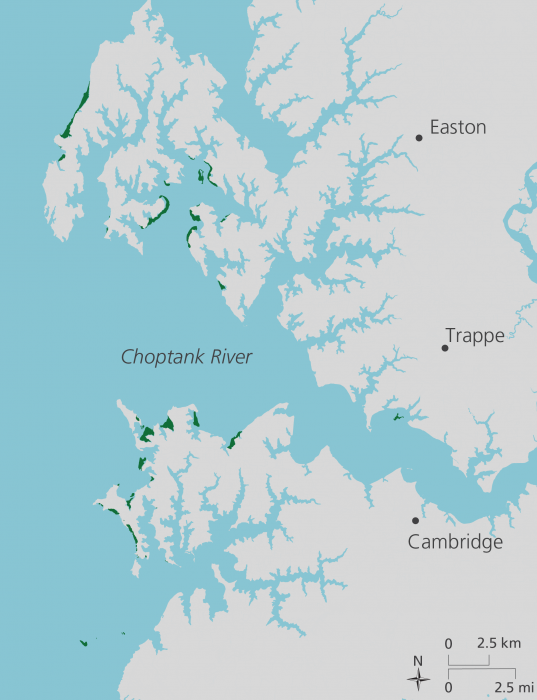In past report card years, specific regions throughout Chesapeake Bay have shown improving trends, but this is the first year that the overall Chesapeake Bay is showing significant improvement. Overall Chesapeake Bay Health Scores have been variable in the past. However, since 2015, Chesapeake Bay Health Scores have consistently been in the high C range (53, 54, 54). These consecutive high scores have contributed to an overall positive trajectory for the first time. This positive trend is evidence that Chesapeake Bay restoration efforts are having an impact on improving conditions in the Bay.

Aquatic grass recovery linked to nutrient reductions
In 2017, aquatic grasses, also called submerged aquatic vegetation (SAV), across the Bay recieved the highest score since reporting began. Baywide, aquatic grasses scored 44%, a moderate score. This is a 5 percentage point increase from the 2016 score, and a 32 percentage point improvement from the 1986 score of only 12%. Aquatic grasses are one of the most important habitats in Chesapeake Bay. They provide nursery habitat to key species such as blue crab and striped bass. A scientific article titled: Long-term nutrient reductions lead to the unprecedented recovery of a temperate coastal region was published in the Proceedings of the National Academy of Science in March 2018. This paper shows that reductions in discharges of nitrogen, phosphorus, and other pollutants have led to the largest resurgence of underwater grasses ever recorded.


Healthy fish populations in the Bay
In 2017, the Fisheries Index scored 95%, an increase from last year’s 90%. Fisheries are highly variable over time, but even so, this is the highest score ever recorded. The Fisheries Index is an average of three important species scores. Striped bass, bay anchovy, and blue crab are ecologically, economically, and socially important fish species in Chesapeake Bay. Striped bass held steady with a 100% score, while both blue crab and bay anchovy improved. Blue crab scored a 100% and bay anchovy scored an 84%.

